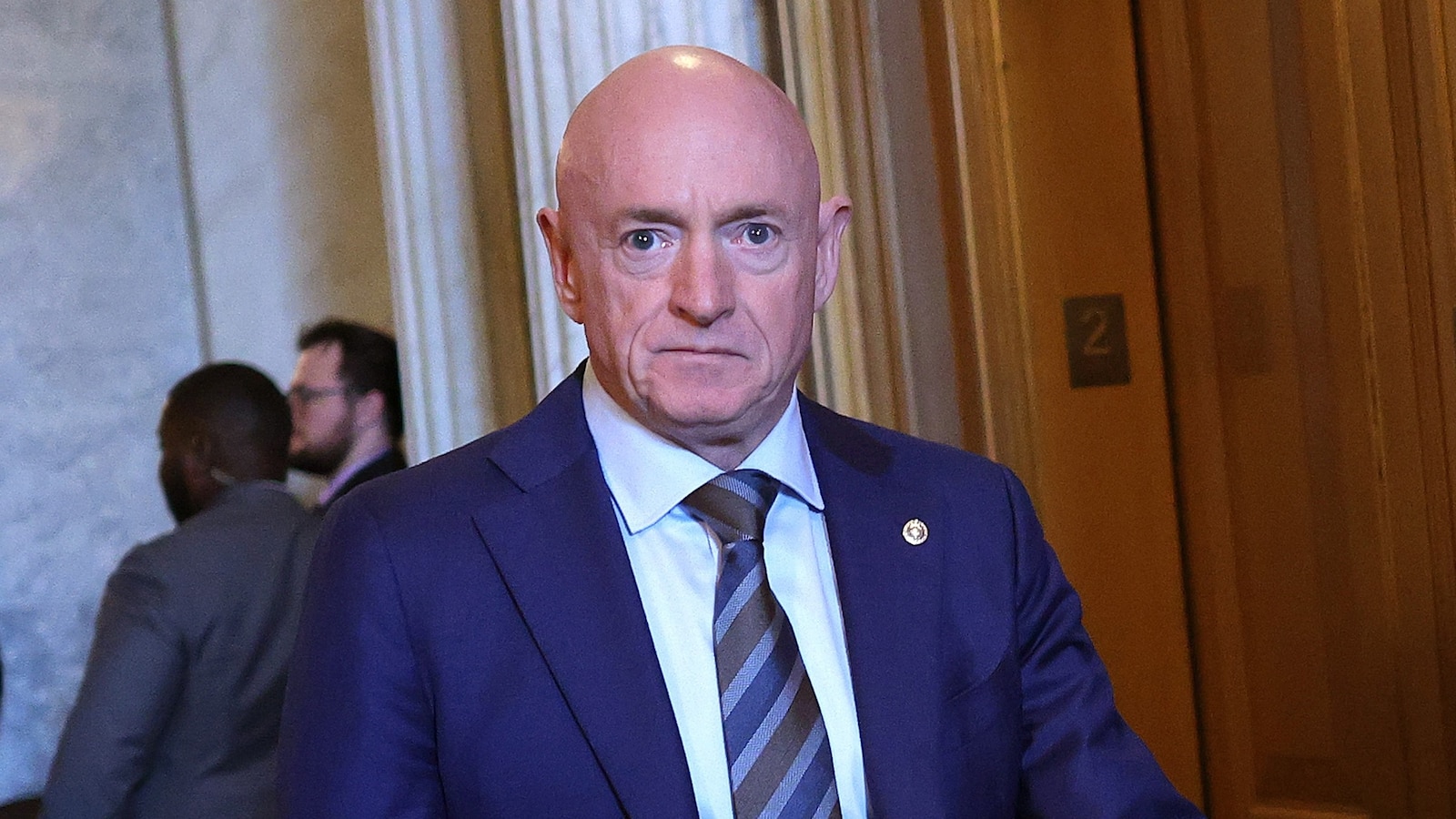The Biden-Trump rematch comes into view with dueling visits to Georgia

ATLANTA — The 2024 presidential election campaign will pick up Saturday where the 2020 contest left off. Or, more precisely, in a place where it never actually ended.
Georgia was so close four years ago that Republican Donald Trump finds himself indicted here for his push to “find 11,780 votes” and overturn Democrat Joe Biden’s victory. Now, fresh off their Super Tuesday domination to set up a near-certain rematch, the two rivals will hold dueling events in a state that both parties see as pivotal to winning in November.
“We’re a true battleground state now,” said U.S. Rep. Nikema Williams, an Atlanta Democrat who doubles as state party chairwoman.
Once a Republican stronghold, Georgia is now so competitive that neither party can agree on how to describe today’s divide. A “52-48 state,” said Republican Gov. Brian Kemp, whose party controls state government. “We’re not blue, we’re not red,” Williams countered, but “periwinkle,” a claim she supports with Biden’s 2020 win and the two Democratic senators, Raphael Warnock and Jon Ossoff, Georgia sent to Washington.
There is agreement, at least, that Biden and Trump each have a path to victory — and plenty of obstacles along the way.
“Biden’s numbers are in the tank for a lot of good reasons, and we can certainly talk about that. And so, it makes it where Trump absolutely can win the race,” Kemp said at a recent forum sponsored by Punchbowl News. “I also think he could lose the race. I think it’s going to be a lot tougher than people realize.”
Biden’s margin was about a quarter of a percentage point in 2020. Warnock won his 2022 Senate runoff by 3 points. Kemp was elected in 2018 by 1.5 percentage points but expanded his 2022 reelection margin to 7.5 points, a blowout in a battleground state.
In each of those elections, Democrats held wide advantages in the core of metro Atlanta, where Biden will be Saturday. Democrats also performed well in Columbus and Savannah and a handful of rural, majority-Black counties. But Republicans dominated in other rural areas, small towns and the smallest cities — like Rome, where the former president will appear Saturday in the congressional district represented by archconservative firebrand Marjorie Taylor Greene.
Biden is visiting to receive the endorsement of Collective PAC, Latino Victory Fund and AAPI Victory Fund, a trio of political groups representing, respectively, Black, Latino, and Asian Americans and Pacific Island voters. The groups were announcing a $30 million commitment to mobilize voters on Biden’s behalf.
The trip follows first lady Jill Biden campaigning in the state, and Vice President Kamala Harris has visited Georgia many times since she and Biden were inaugurated
The fast-growing, diversifying suburbs and exurbs of metro Atlanta, meanwhile, offer the most opportunity for swings, especially from GOP-leaning moderates disenchanted with Trump.
“This will be won or lost on the margins,” said Eric Tanenblatt, an Atlanta business leader and longtime Republican fundraising bundler who backed Nikki Haley’s GOP bid against Trump.
Democrats have a head start in building their campaign organization and promise sustained, direct outreach to millions of Georgians — different from the pandemic-limited 2020 campaign and more like Warnock’s reelection bid.
“When you’re talking about slim margins like the one in 2020, organizing has got to be at the heart of the campaign strategy,” said Jonae Wartel, Biden’s state director and a veteran of Warnock’s operation.
Still, Biden could see a slip in any part of his coalition for any number of reasons: inflation, the Israel-Hamas war, worries over a spike in migrants crossing the U.S.-Mexico border and broad concerns about whether he’s up to the job at 81 years old.
There are local matters to boot: Biden cannot afford to lose younger metro-Atlanta voters energized by their opposition to a police training facility being built in Atlanta and backed by the city’s Democratic leadership. And Republicans are intensifying their immigration attacks by highlighting the case of a Venezuelan migrant who entered the U.S. illegally and is accused of killing of a Georgia college student, Laken Riley, last month.
Williams countered that Biden has a positive record to sell. She pointed to an infrastructure package that cleared Congress with bipartisan support and a strong overall economy with low unemployment, rising wages and stabilizing inflation. The economy is strong enough, she noted, to give Georgia an ample surplus that the Republican Kemp brags about.
“We have work to do between now and November to remind people what has happened,” Williams said.
Trump’s biggest challenge may be corralling centrist white voters who defected from the GOP in some recent elections. Democrats are eager to remind those voters, especially women, of Trump’s role in the Supreme Court decision to end a national right to abortion — a ruling with salience in Georgia because of a state ban on abortions at six weeks of gestation, before many women know they are pregnant.
The former president’s pending racketeering trial in Fulton County will keep the spotlight on Biden’s argument that his predecessor is a threat to democracy. And Trump’s rift with traditional Republicans, including Haley backers, remains on full display.
“Far be it from me to tell the former president what to do, but I think he would want someone like Nikki to be part of his team — and she could bring other people,” said Tanenblatt, the Haley bundler.
Tanenblatt said he sees no evidence that Trump or his advisers are engaged in conventional party unity efforts, like what Biden managed with Bernie Sanders and his progressive backers in 2020.
“Marjorie Taylor Greene, one of the former president’s major supporters, is out there before Nikki got out saying she should switch parties,” Tanenblatt said. “That’s not the kind of rhetoric you should be spewing.”
Kemp, once a target of Trump’s ire because he certified Biden’s slate of 2020 electors, is among the prominent Republicans nationally who have yet to endorse Trump. The governor pledges to support the GOP ticket and echoes Trump’s attacks on Biden, on immigration particularly. But it remains a question what part Kemp will play in the fall. When Trump loyalists took over the state GOP after 2020, Kemp simply built his own political organization. It is expected mostly to target competitive state legislative seats.
Georgia Republican Chairman Josh McKoon played down any talk of splintering, noting the left has a plethora of campaign and nonprofit organizations contacting voters. “Gov. Kemp is a great governor, and his work will benefit Republicans up and down the ticket,” McKoon said.
Lt. Gov. Burt Jones, the highest-ranking Georgia Republican who openly backs Trump, said the GOP’s overall message is the most important variable. “This ’24 election cycle is going to be about kitchen table issues,” Jones said.
Trump himself also insists he can attract more Black and Latino voters, mainly men. Wartel promised an aggressive response with “an all of the above” approach. She promised more visits not only from Harris and the Bidens, but “a lot of local champions” vouching for them.
Some activists demonstrate why that becomes another tightrope.
Harris came last fall to Atlanta’s Morehouse College, a historically Black campus, during the peak of public debate over a planned law enforcement training facility that opponents deride as “Cop City.” The development, supported by Atlanta Mayor Andre Dickens, has drawn protests, with some violent clashes, and Dickens has opposed a referendum on the project’s future.
When Dickens stepped to the Morehouse stage to introduce Harris, he was drowned out with jeers from students from multiple campuses.
Hillary Holley, who runs the Care in Action group that organizes domestic workers in Georgia, said it reflected frustration over “anti-democratic tactics” that can, in turn, affect Biden.
Dickens, Holley said, “is not a surrogate that Biden and Harris need to be around.”
___
This story has been corrected to identify Eric Tanenblatt as an Atlanta business leader, not a lawyer.
___
AP White House correspondent Zeke Miller contributed from Wilmington, Delaware.
Source: abc news















